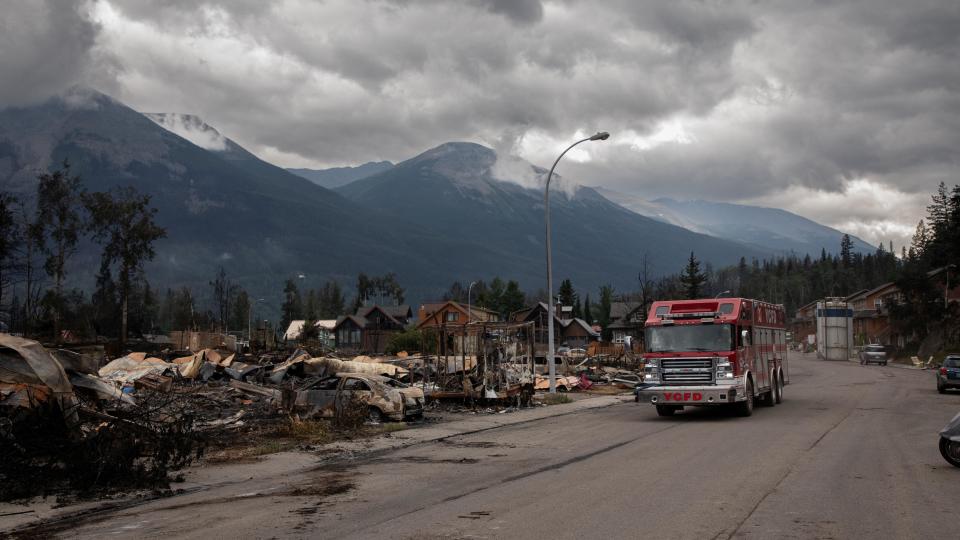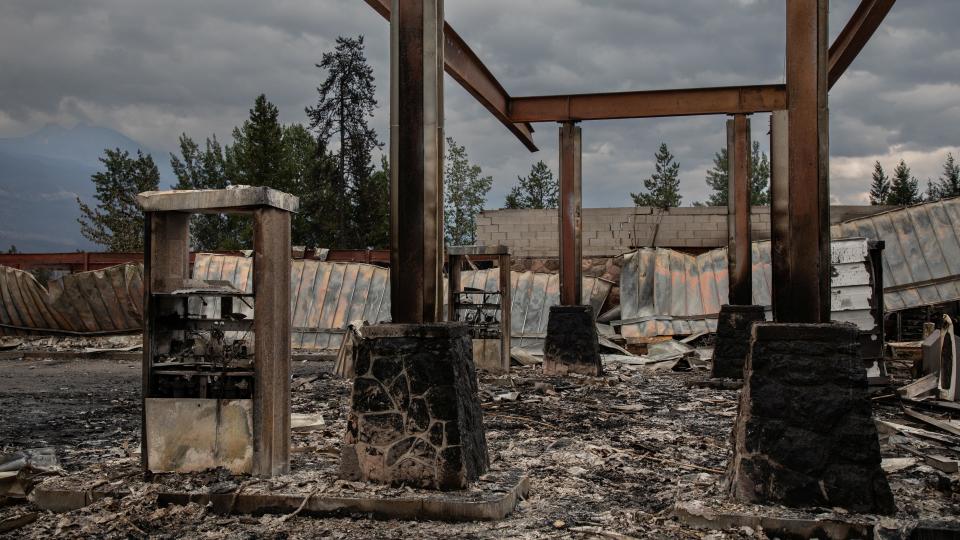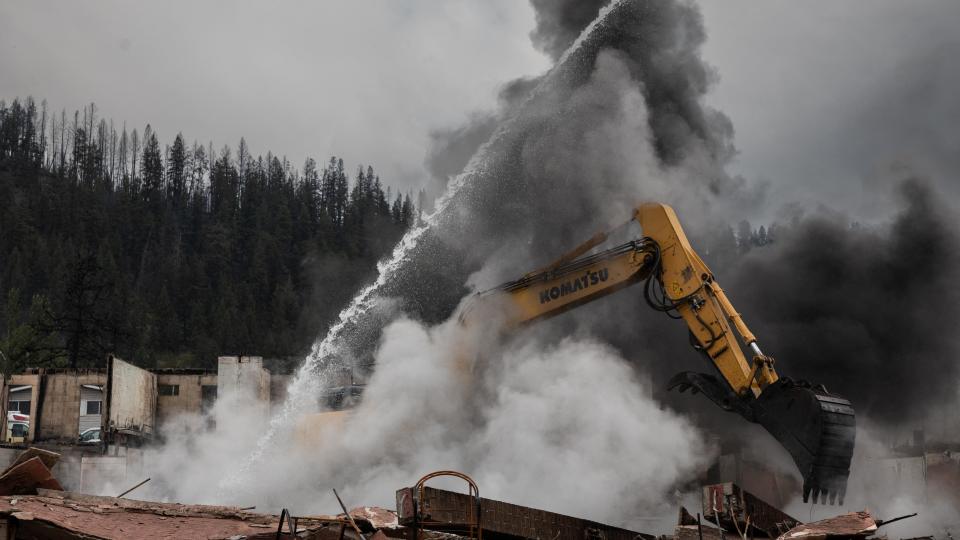The fierce wildfire which swept through the Canadian town of Jasper in recent days melted cars to the road and turned homes to ash.
The first images of the devastation at the famous tourist town have emerged, after a 100m (328ft) firewall swept through late on Wednesday.
It has been difficult to get a sense of the scale of what happened because the fire burned out-of-control for days.
Some 25,000 people were evacuated from the town and the Jasper National Park, in Alberta.



On Friday, authorities from Jasper National Park said 358 of the 1,113 structures in town had been destroyed.
However, all critical infrastructure was protected, including the hospital, library and firehall.
A list of addresses where buildings were damaged is being finalised and will be released “shortly”, authorities said.


One local who does know he has lost his home is Jasper Mayor Richard Ireland, who came back to the town with other officials on Friday.
He stood in front of what remained of his home, reduced to a few charred cement blocks, and said: “Now, it’s well, it’s just memories of family and fire.”
Mr Ireland spoke of a photograph lost to the flames, where he was just a two-year-old sitting on some moving boxes next to a birthday cake at that very house. He had lived at the same address for 67 years.
“So many others are going to go through this same thing,” he told local media.




New images show extraordinary damage at the famous tourist town, nestled in the famous Canadian Rockies.
The heat was so intense it turned parts of a car into a pool of metal, dripping across the road like a silver ice cream on a hot day.
Other photographs show the twisted remains of cars piled on top of each other, and a school bus now black with only a tinge of that iconic yellow remaining.
Hotels and a church were destroyed, and many homes.




Authorities are cautious of confirming what has been levelled, at this stage.
“We are empathetic to the residents and businesses seeking more information on specific details on the extent of damage,” an update from authorities said.
“We know people are seeing images on media and social media but what we know about fire incidents is getting the information right is paramount.”
Fire crews are now taking advantage of cooler weather and recent rainfall.
They are containing the remaining hotspots in smouldering structures and along the wildfire perimeter closest to the townsite.




But winds were expected to pick up and hot, dry weather is forecast to return by Monday.
Sitting just north of the more popular Banff National Park, Jasper National Park is the largest in Canada’s Rocky Mountains.
The Unesco World Heritage Site is home to elk, grizzly bear, moose and bison.
The adjacent town of Jasper has a population of about 5,000, but has some dozen hotels to accommodate the roughly 2.5 million people who pass through to visit the park every year.




Karyn Decore, whose family has owned the historic Maligne Lodge over 60 years, has been receiving condolences from around the country since learning it was destroyed as the fire swept through town.
Ms Decore says her now-destroyed hotel is normally 100% occupied from May to October every year. Now, all of the tourists and staff have evacuated the area, and they don’t know when they may return.
Park officials estimated that a power outage in the town last year, which lasted two weeks, deprived local businesses of some CAD$10m ($7.2m;£5.6m) in revenue.


It remains to be seen how long it will take to restore the resort town, as well as the pristine ecology that helps make the majestic park a pride of Canada.
Meanwhile, there are currently 48 wildfires burning “out of control” around the Alberta province.
Source Agencies


